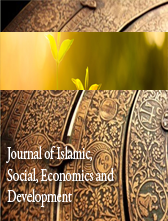EFFECTS OF RURAL AND URBAN POPULATION ON HEALTH CARE EXPENDITURE IN CHINA: ANALYSIS USING BOUND TESTING APPROACH
Abstract
This paper examines the effects of population at rural and urban on health care expenditure in the case of China. Total population in China increased from year to year, as in 1970 total population is 5.78 million to 1.21 billion in 2015. Projection of population established in 2015 predict that the total population will keep growing until at least 2050, reaching an estimated 8 billion people in 2024, and 9 billion people in 2024 and 9 billion by 2040. As the demographic transition follows its course worldwide, the population will age significantly, with most countries outside Africa trending towards a rectangular age pyramid. But total population in urban is higher than population in rural. For urban population they will spend with their own money for healthcare or out of pocket expenditure. This paper is estimate the comparison between population in rural and urban on healthcare expenditure in case of China. By using bound testing approach to cointegration and error correction model, developed within an autoregressive distributed lag (ARDL) framework developed by Pesaran et al. (1999) and data cover from period 1970-2016, we investigate whether a long-run equilibrium relationship exists between population and health care expenditure. Using this approach, the expected result for long run relationship between population in rural and urban on health care expenditure is positive but the healthcare expenditure for urban population is higher than rural population.













